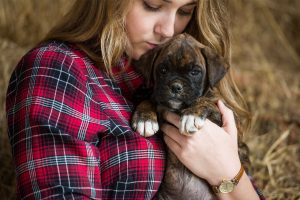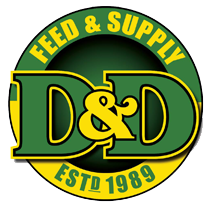 So, you have decided to get a new puppy! Whether this is a first-time pet or an addition to the family, there are several things you need to get ahead of time and there’s some planning to do. There are whole books written on this subject, so this will by no means be an exhaustive list but will include the most important points to consider.
So, you have decided to get a new puppy! Whether this is a first-time pet or an addition to the family, there are several things you need to get ahead of time and there’s some planning to do. There are whole books written on this subject, so this will by no means be an exhaustive list but will include the most important points to consider.
Establish a veterinary relationship early: Before bringing your puppy home, decide on a veterinary clinic or hospital to care for your puppy’s health. Even if you currently have a veterinarian for your other pets, ask when you should have your new puppy examined. Most veterinarians recommended an exam within 3 to 5 days of getting your new puppy to evaluate any health issues. At the first appointment, the veterinarian will work with you to establish a vaccination and parasite control plan to keep your puppy healthy and free of illness
Dog food: Puppies have specific nutritional requirements to support their growth and development. Loyall Life® Puppy and Loyall Life® Puppy Large Breed contain a balance of essential nutrients to support the all-important start to a healthy life.
Food and water bowls: Puppies need to eat three times a day, so food bowls need to be cleaned frequently. Stainless steel bowls work the best and harbor fewer bacteria than plastic or glass. Additionally, puppies are not delicate eaters, so a food and water bowl with a wider base will provide additional stability.
Collar or Harness: Buy an appropriately sized, adjustable collar or harness making sure they wear it regularly. The collar or harness should be tight enough to fit two fingers between it and your puppy. Remember to check it weekly as your puppy grows and buy a new, larger one as needed.
Leash: Puppies are not born knowing how to walk on a leash. This is an important socialization skill that they must learn. The leash should be 4 to 6 feet long and allow you to walk comfortably with your puppy while still maintaining control.
Crate or Carrier: Dogs are den animals. They find comfort and security in an enclosed, intimate space they can adopt as their own. Choose a crate or carrier your dog can grow into and move around in but not so big that they can eliminate in one corner and sleep in another.
Grooming: Depending on your dog’s coat, you’ll need a comb, brush or shedding blade. Routine brushing will keep your puppy’s hair coat clean and shiny and also help you create a bond with your new puppy.
Bathing Supplies: At some point, your puppy will need a bath. You’ll need pet shampoo, cotton balls for the ears, a sterile eye ointment, and towels.
Cleaning products: Even the most well-behaved puppy will have an accident in the house. Having natural cleaning products on hand will help with the safe cleanup of accidents. Consider using an enzyme-based cleaning product since these will break down pet odors rather than just masking them.
Puppy pads and newspapers: Waterproof puppy pads can be useful under the bedding in the crate to aid in clean-up and help protect the floor but should not be used as a potty-training tool in the house. Using puppy pads and newspapers as potty-training tools only gives your puppy permission to eliminate in the house – behavior you probably want to avoid.
Chew toys: Puppies will chew anything in their path. It is a natural exploration behavior, but one that can be hazardous to your shoes, clothes, and household. Choose a variety of age and size-appropriate toys.
Training Treats: They can make training much easier and reinforce the human-pet bond by using positive reinforcement. They should be small, tasty bites of flavor to reward good behavior and should not be overused as a meal replacement.
Arrival day: Finally, schedule your puppy’s arrival for a day when you will be home all day. Allow your puppy to explore the house on his own terms. Reduce exposure to loud noises and frantic activity during this time so that he may adjust normally to his new surroundings. While it is exciting to have a new puppy in the house, reduce the urge to continually seek him out and hold him. Go slow and allow him to come to you when he is comfortable.
By preparing ahead of time and following the suggestions, your transition into puppyhood and your puppy’s transition into a new home will be as stress-free and uneventful as possible.
